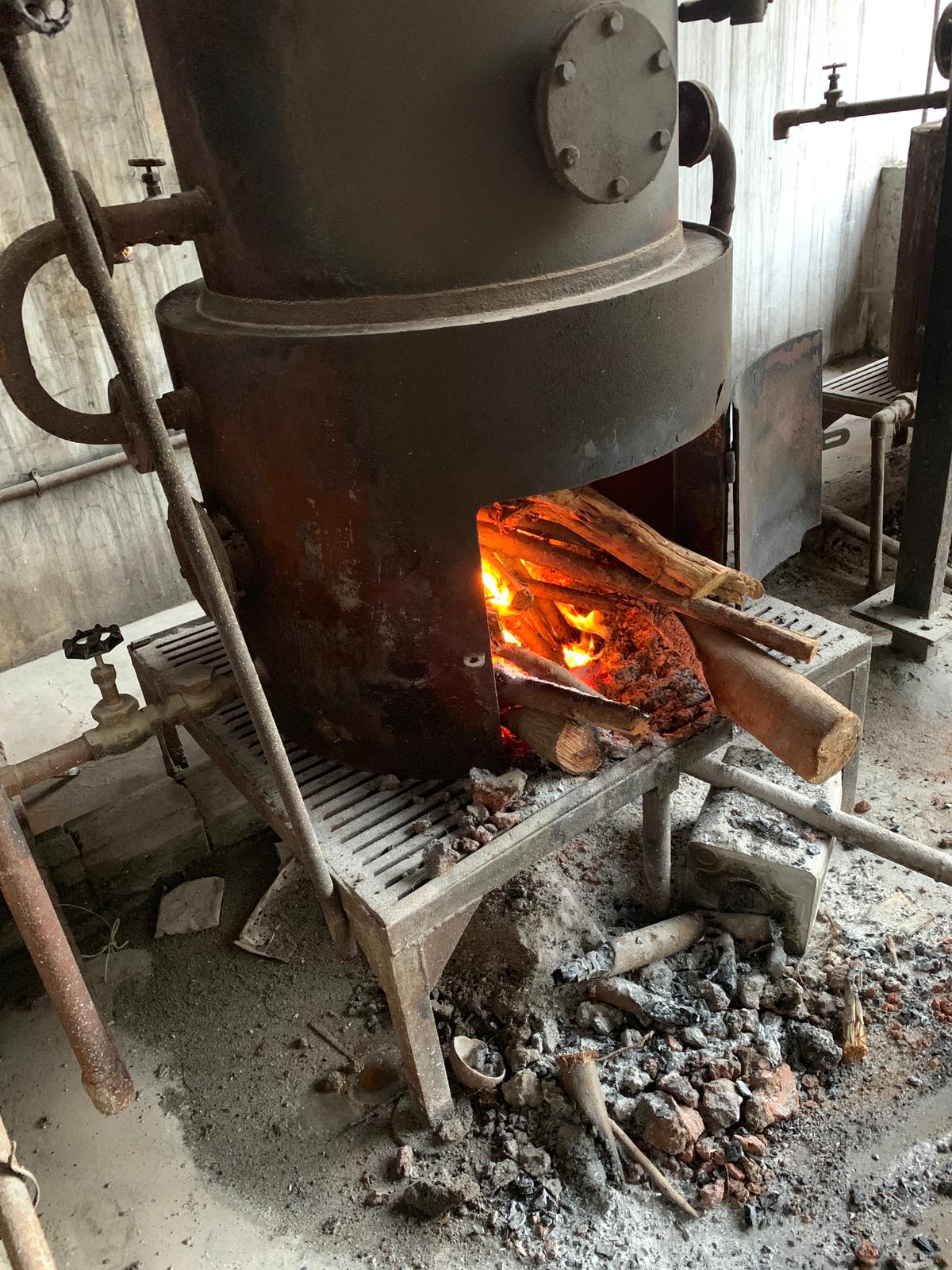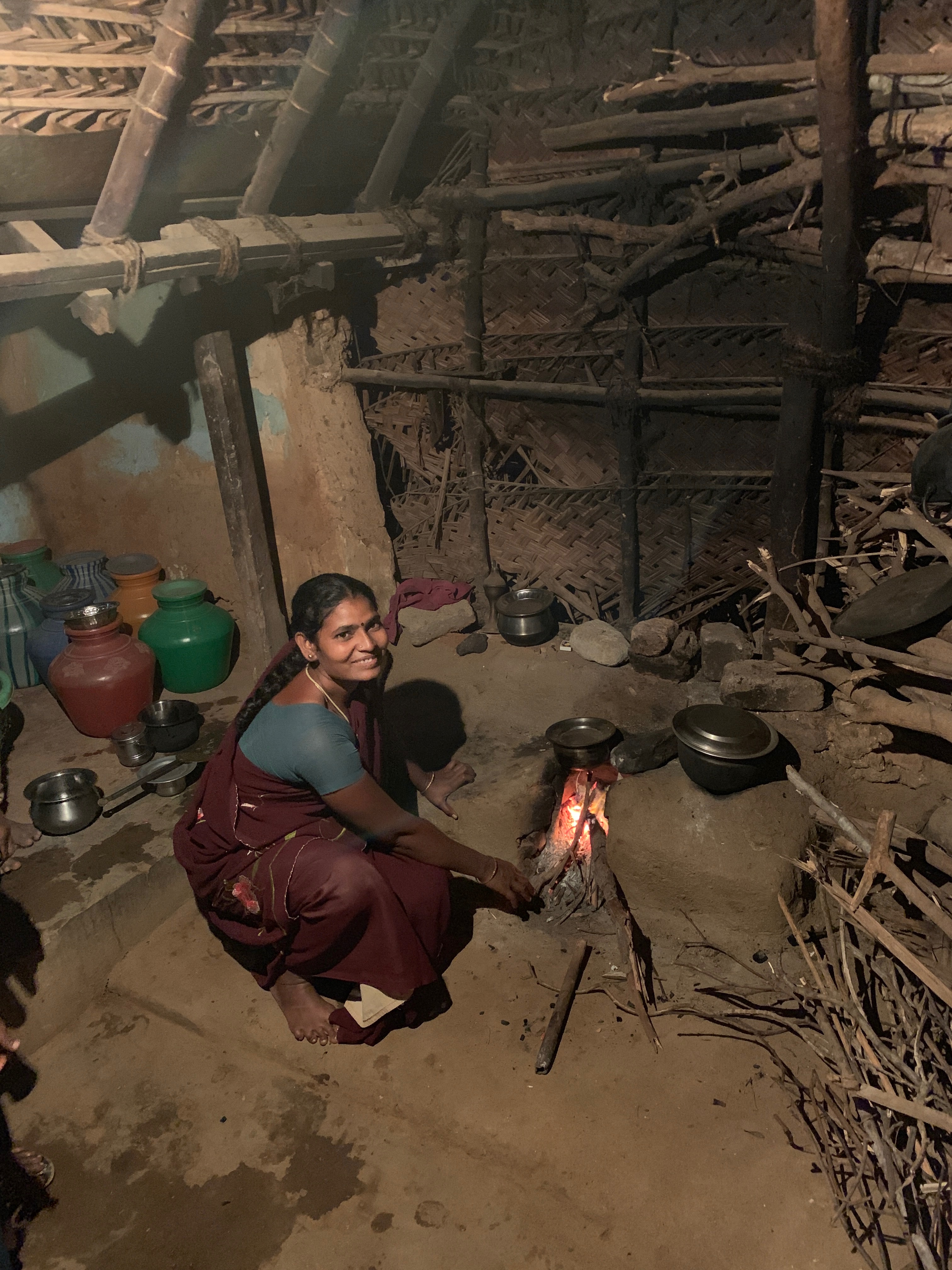Alejandro Comellas Freymond, MD, clinical associate professor in the Division of
 Pulmonary, Critical Care and Occupational Medicine, and Emma Stapleton, PhD, a public health postdoctoral research fellow in the Department of Occupational and Environmental Health and a member of Comellas’s lab, spent a week in Tamil Nadu, India, preparing to research the effects of indoor biomass fires on the lungs of women. Comellas and Stapleton are collaborating with Periyar Maniammai Institute of Science and Technology, one of the most advanced and progressive universities in Thanjavur, India, to run test experiments.
Pulmonary, Critical Care and Occupational Medicine, and Emma Stapleton, PhD, a public health postdoctoral research fellow in the Department of Occupational and Environmental Health and a member of Comellas’s lab, spent a week in Tamil Nadu, India, preparing to research the effects of indoor biomass fires on the lungs of women. Comellas and Stapleton are collaborating with Periyar Maniammai Institute of Science and Technology, one of the most advanced and progressive universities in Thanjavur, India, to run test experiments.
“Indoor cooking is a huge source of air pollution worldwide. In India, it’s especially problematic. More than half the people use solid biofuels,” Stapleton said. “These particles increase your risk of developing pneumonia and acute lower respiratory tract infections.”

In 2017, approximately half a million people died due  to household air pollution from particulate matter (PM) in India. One World Health Organization report compared an open cooking fire in the home to the equivalent of burning 400 cigarettes in an hour.
to household air pollution from particulate matter (PM) in India. One World Health Organization report compared an open cooking fire in the home to the equivalent of burning 400 cigarettes in an hour.
Breathing PM from these indoor biomass fires, often produced from wood or dung, exposed home inhabitants, especially the primary cook—typically a woman—to increased chances of developing bronchitis, among other deleterious health effects.
Comellas and Stapleton are working with Eric Hoffman, PhD, Professor of Radiology, Internal Medicine, and Biomedical Engineering, renowned expert in imaging analysis and cardiopulmonary physiology, and with former UI postdoctoral radiology fellow (now at UC, San Diego) Abhilash Kizhakke Puliyakote, PhD. The team hopes to establish a scientific correlation between these fires and the health problems seen in Indian citizens. This research should point toward a long-term solution that will hopefully also be cost-effective for the households at risk.
“Having the specific mechanistic link between health effects and PM exposure is lacking in the literature,” Stapleton said. “We’re trying to show a true relationship, so we want to characterize the chemical components of the particles people are exposed to and understand whether they may be directly responsible for pulmonary health effects.”

The particles assumed to be the most damaging are called PM2.5, or particulate matter that is less than 2.5 micrometers in diameter. These particles are small enough to easily deposit deep into the lungs and contaminate the bloodstream. Some particles in this category are even thought to be able to penetrate the blood-brain barrier. The solid fuels used in biomass cooking are especially laden with these particles.
Comellas and Stapleton are using two devices to measure PM2.5 and analyze the particles. Assisted by Peter Thorne, PhD, professor in the College of Public Health, Comellas and Stapleton will also deploy electrostatic dust collectors to collect endotoxin, or pieces of pro-inflammatory bacterial cell walls.
“We’re also setting out rugs, which is a slightly unconventional method that we developed, because what we really wanted was to capture whole particles and we didn’t have a good way of doing so. We want to be able to use these particles and put them on human lung cells,” Stapleton said. “We’re letting all the dust and combustion particles settle onto the rugs, and then we’re vacuuming up the particles for subsequent use in the lab.”
To reduce and eventually eliminate the use of biomass among its citizens, the Indian government is promoting the use of liquid petroleum gas (LPG) through several programs. Pradhan Mantri Ujjwa Yojana, established last year, currently provides LPG to 50 million low-income households. By 2020, the Indian Ministry of Petroleum and Natural Gas hopes to support 80 million households in need.

“Long term [LPG] is not the most sustainable thing, but it is much better in terms of health effects,” Stapleton said. “That’s a huge reduction in PM exposure, and therefore burden of disease on people.”
Unfortunately, socioeconomic status plays a role in which households are at risk, and there are a total of 100 million Indian households that still do not have the support needed to eliminate biomass fires from their everyday lives. In order to preserve what LPG they have, most families will “stove stack,” or use two stoves: one biomass stove for everyday life, and one LPG stove for when guests visit.
“There’s a lot of limitation in access. It’s not that people do not want cleaner technology,” Stapleton said. “At this point, our biggest question mark is if we’ll have a good control population, because basically everyone at some point and time was exposed to biomass.”
“This work is possible thanks to the Environmental Health Science Research Center support and all its members who have contributed in helping with the approval process as well as the design of the study,” Comellas said. “Especially we are thankful to Dr. Thomas Peters who has provided invaluable advice in the design of the field work.”
The project has been four years in the making, with changes in Indian government and other obstacles delaying the process. Once Comellas and Stapleton have completed their particle analysis from the pre-pilot, they will return to Tamil Nadu for two weeks in March to continue their research.


One comment on “Burning question takes big step closer to answers”